'We're famous for our skies': The science behind a Manitoba sunset
 A lake in northern Manitoba near Cranberry-Portage. (Source: Travel Manitoba)
A lake in northern Manitoba near Cranberry-Portage. (Source: Travel Manitoba)
To catch a glimpse of a beautiful sunrise or sunset is one of the great wonders of nature.
The various shades of orange, red and pink motivate people to travel all over the world for a chance at a special and awe-inspiring sight.
 Spirit Sands Hike in Spruce Woods Provincial Park. (Source: Travel Manitoba)
Spirit Sands Hike in Spruce Woods Provincial Park. (Source: Travel Manitoba)
But what is it that makes sunrises and sunsets so beautiful to look at and why are some more striking than others?
According to Natalie Hasell, warning preparedness meteorologist with Environment and Climate Change Canada (ECCC), it has to do with scattering and light absorption.
She explained that the light from the sun is made up of many wavelengths, with the short wavelengths in the blue/indigo visible light spectrum and the longer wavelengths in the visible spectrum of orange and red.
 Winnipeg Folk Festival sunset. (Source: Jillian Recksiedler)
Winnipeg Folk Festival sunset. (Source: Jillian Recksiedler)
During the daytime, when the sun is straight overhead, the sky is blue due to Rayleigh scattering, which causes the scattering of shorter wavelengths.
However, during sunrise and sunset, the sun is at more of an oblique angle. This means the light has more atmosphere to travel through, scattering out the blue and leaving a greater proportion of the longer wavelengths. This lights up the sky in oranges, reds and pinks.
“To summarize, at sunrise and sunset the light has to travel farther through our atmosphere than in the middle of the day, and the scattering of shorter wavelengths is more complete,” Hasell explained.
“So we lose the blues and greens and we’re left with yellows, oranges and reds.”
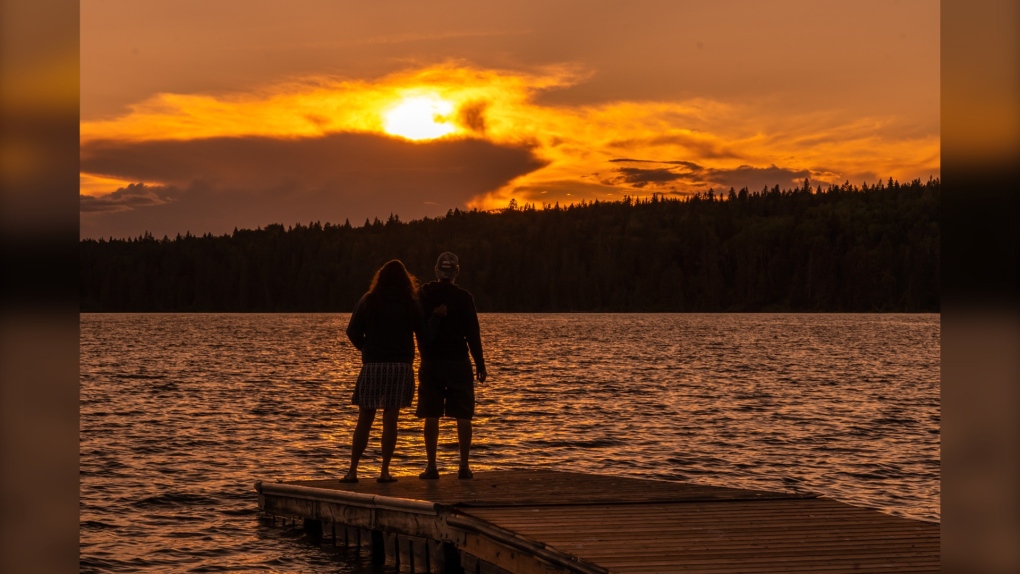 Clear Lake, Riding Mountain National Park. (Source: Travel Manitoba)
Clear Lake, Riding Mountain National Park. (Source: Travel Manitoba)
As for why some sunrises and sunsets are more spectacular than others, it has to do with larger particles, including dust, pollen, smoke, water vapour and water droplets, being closer to the wavelength of radiation. The interaction that the light has with these particles is called mie scattering and it tends to have a greater impact on longer wavelengths.
Hasell said this scenario can cause more of the light to be blocked or scattered away, making the sunrise or sunset less exciting to look at.
“A lot of it has to do with these different types of scattering and then it depends on the location or the angle at which things in the atmosphere, like clouds, like dust, like pollen or whatever is sitting at,” she said.
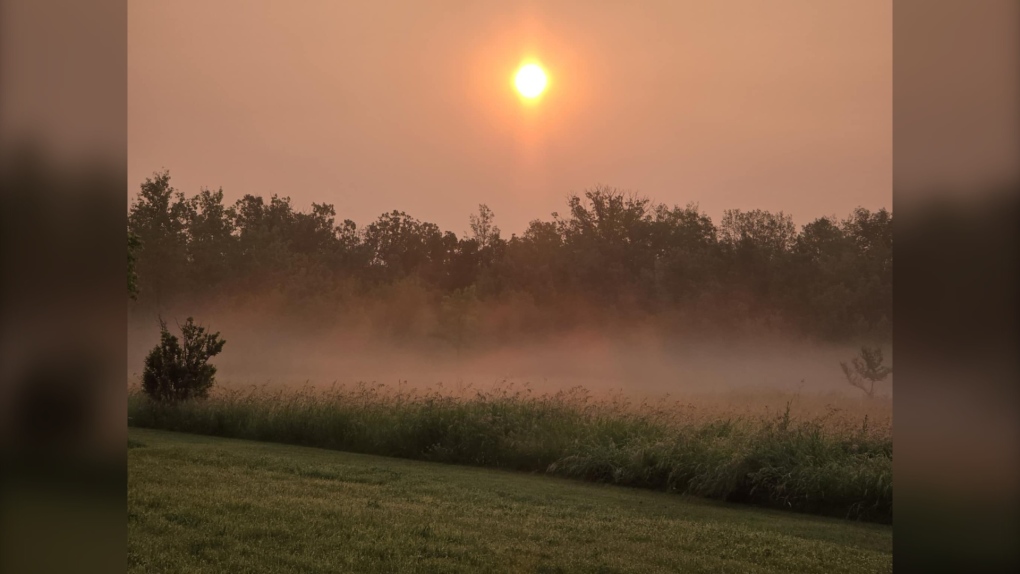 A sunset in east Selkirk. (Source: Jessica McGill)
A sunset in east Selkirk. (Source: Jessica McGill)
Advice for catching a sunset
For those hoping to catch a beautiful sunrise or sunset, Travel Manitoba’s senior content marketing specialist Jillian Recksiedler recommends getting out of the city and heading to the western side of the province.
“You need to get out of places that obstruct the view of the horizon,” she said.
“That’s why you need big, open spaces to really appreciate the beauty of the horizon and the Prairie sunset.
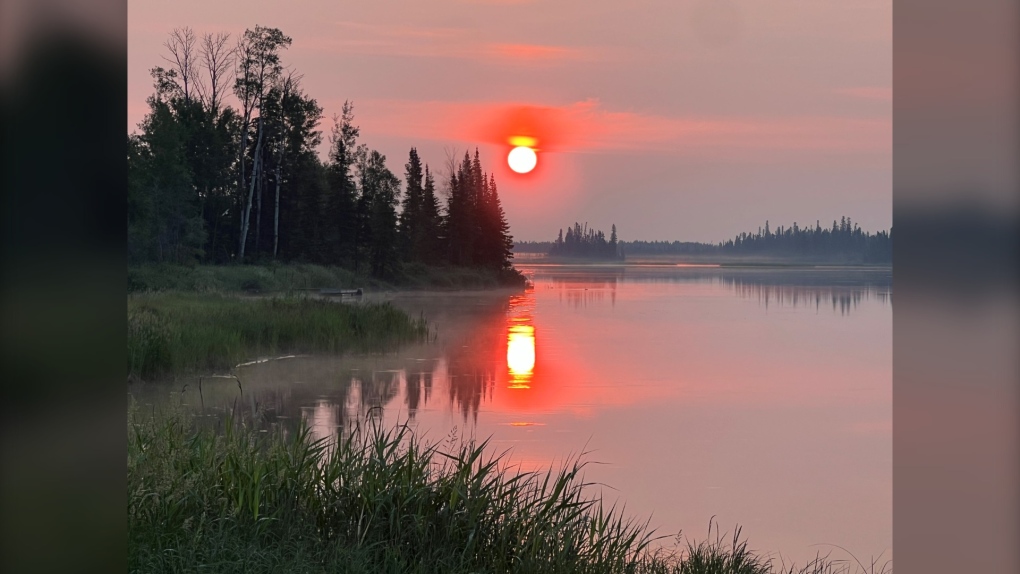 Cross Lake. (Source: Gordon Ross)
Cross Lake. (Source: Gordon Ross)
Hasell said it’s all about persistence.
“It’s a coincidence. It’ll be just exactly where you are that time,” she said.
“I’m sorry to be so vague, but my suggestion would be to keep trying.”
Hasell is also reminding Manitobans to stay safe when trying to watch a sunrise or sunset and to be aware that there are risks when looking directly at the sun. She suggests using some form of protection to avoid possible damage to your retinas.
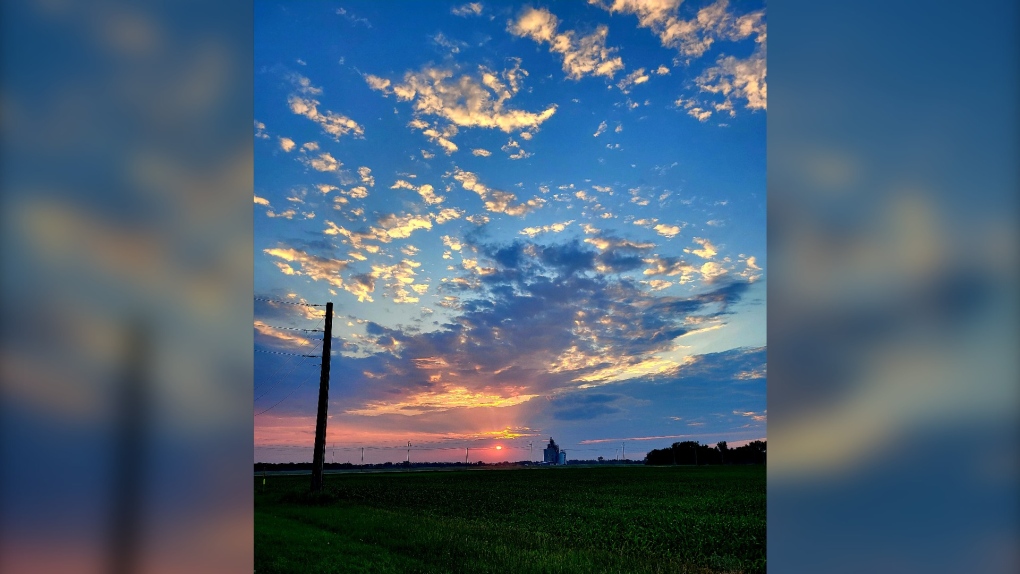 A sunset in Winkler. (Source: Vern Thiessen)
A sunset in Winkler. (Source: Vern Thiessen)
The beauty of Manitoba sunsets
People travel all over the globe to take in the world-famous sunsets of Greece, Kenya, and India; however, Recksiedler said you can find something just as spectacular in Manitoba.
She said what makes the Prairie sunsets extra special is our sky.
“We’re famous for our skies,” she said. ”People will often think the Prairies are boring and flat but they haven’t seen our sunsets or they haven’t seen our sunrises and they certainly haven’t seen the colours on a midsummer day.”
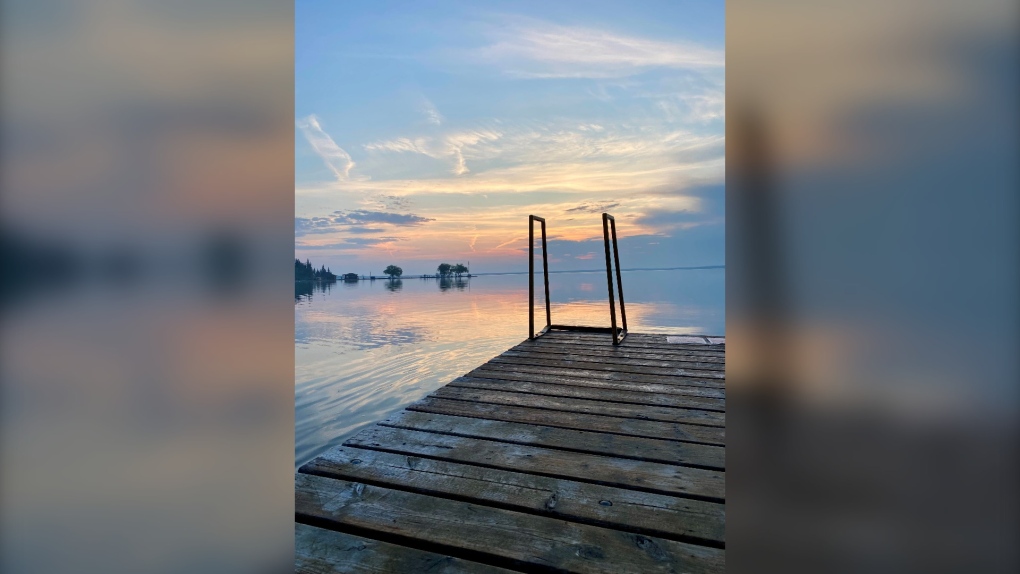 A sunset on Clear Lake. (Source: Cooper Hanson)
A sunset on Clear Lake. (Source: Cooper Hanson)
As for Recksiedler’s suggestions for where to catch the best sunsets in the province, she recommends the following spots:
- Birds Hill Provincial Park
- Grand Beach
- Victoria Beach
- Lester Beach
- Lundar Beach Provincial Park
- Watchorn Provincial Park
- The rolling fields of Melita, Virden, Souris, Boissevain and Deloraine
- Lake Audy in Riding Mountain National Park
- Spirits Sands Hiking Trail in Spruce Woods Provincial Park
- Otter Falls Campground in Whiteshell Provincial Park
CTVNews.ca Top Stories

BREAKING Follow live: Serial killer Paul Bernardo denied parole for a third time
Notorious killer Paul Bernardo has been denied parole for a third time following a hearing before the Parole Board of Canada.
BREAKING Biden says Israel-Hezbollah ceasefire will take effect Wednesday morning
A ceasefire between Israel and Lebanon's Hezbollah will take effect on Wednesday after both sides accepted an agreement brokered by the United States and France, U.S. President Joe Biden said on Tuesday.
Loonie tanks after Trump threatens tariffs on Canadian goods
The Canadian dollar fell to its lowest level since May 2020 after Donald Trump threatened to impose tariffs on Canadian goods shipped to the United States once he takes office in January.
As Trump vows major tariff hike, a look at what the U.S. imports from Canada
Some Canadian products could face huge tariffs on the first day of Donald Trump's administration in January. Here’s a quick look at what the U.S. imports from Canada.
Canadian government suspends contracts with Boissonnault's former company
The medical supply company co-founded by Liberal MP and former minister Randy Boissonnault has been suspended from bidding on or entering into contracts with the Government of Canada.
Longtime member of Edmonton theatre community dies during 'A Christmas Carol' performance
Edmonton's theatre community is in mourning after an actor died during a performance of "A Christmas Carol" at the Citadel Theatre on Sunday.
Police chief says 'extreme left group' behind Montreal protest violence; Legault calls for more arrests
Quebec Premier Francois Legault is putting pressure on the Montreal police to arrest everyone involved in an anti-NATO protest that turned violent last week.
They thought they'd found Amelia Earhart's plane. Instead, the search continues
The disappearance of pioneering aviator Amelia Earhart more than 87 years ago has remained one of the most captivating mysteries in history, with a handful of explorers devoted to scouring the seas for any clue to her final whereabouts.
DEVELOPING Trudeau confirms premiers meeting, Poilievre calls Trump tariff threat 'unjustified'
Prime Minister Justin Trudeau will be convening a meeting of all of Canada's premiers 'this week' to discuss U.S. president-elect Donald Trump's intent to impose a 25 per cent tariff on all products from Canada and Mexico on his first day in office, if border issues aren't addressed.


































